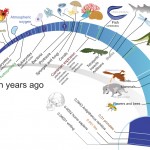There are many different ways to classify contents. Some people categorize contents based on the delivery channel: contents for the social media, contents for the website, contents for the outdoor ads, etc.
Other people classify contents based on the medium they use: audio content, video content, text content, etc.
But for the content strategists, there are other content classification models which are more useful. At least reading the list of different types of contents can be a source of ideas about possible solutions in content marketing.
Here I have prepared a list of the content types based on the message of the content, not the medium or the delivery channel. This is just the first part and I will add more types to the following list in future articles:
Content type #1: Definitions
Most of us don’t consider definitions as a real content. But don’t forget that most of the people on the web will look for the definition of a term when they face it for the first time.
Why don’t you publish a definition of customer relationship management and other relevant terms if you are going to sell a CRM solution in your site in future?
Why don’t you publish a definition of content strategy if you are going to build up a website about this topic?
Definitions can be very valuable if your statement be precise, applied, referenced and impartial.
This is what Bussolati has done by providing a list of 10 different definitions of the content strategy.
Content type #2: Reviews
Reviews are one of the most attractive pieces of content in the digital age. You will have three different types of audience for every review:
- The ones who are trying to make a decision to buy a product or allocate time and resource to consume a content.
- The ones who have used the product or consumed the content and now are curious to know opinions of the others about it.
- The ones who have not used the product and will not use it, but like to talk about it everywhere!
So as you see all of the 3 above mentioned segments are large and important for marketing most of the products and services. Therefore creating content with the review approach can be a justifiable decision in most of the cases.
Reviews can be very attractive and engaging if prepared professionally and without bias. Just take a look at this review about medical alert systems. It will be interesting even if you are not going to buy such a device in near future.
Amazon is another example. It’s not only an online bookstore but also one of the largest stock of review contents in the web. Just consider a few minutes and compare the reviews of content everywhere and content strategy for the web. Now it would be much easier to decide which one can be more applicable for your case.
Content type #3: Whitepapers
Here’s definition of the white paper according to Wikipedia:
A white paper is an authoritative report or guide informing readers in a concise manner about a complex issue and presenting the issuing body’s philosophy on the matter. It is meant to help readers understand an issue, solve a problem, or make a decision.
Don’t worry if the definition is too long or seems too complicated. White papers are the papers with scientific style without the complexity of academic papers.
It’s now obvious for everyone that most of the academic papers would be of no use for a common reader. Those documents are created specifically for publishing in scientific journals for gaining the academic advantage and citation of course.
The common audience likes to read a scientific paper. A paper comprising of analytical data, logical descriptions, valid quotations and practical application. But it has to have a simple structure. They don’t want to be bombarded by abstracts, literature reviews, future research suggestions and Cronbach calculations, and here lies the importance of white papers.
In order to get more acquainted with the white paper structure, would be helpful and instructive if you take a look at the content marketing institute’s white paper collection.
Here is the second part of this article talking about checklists, article collections and lists of the people.





